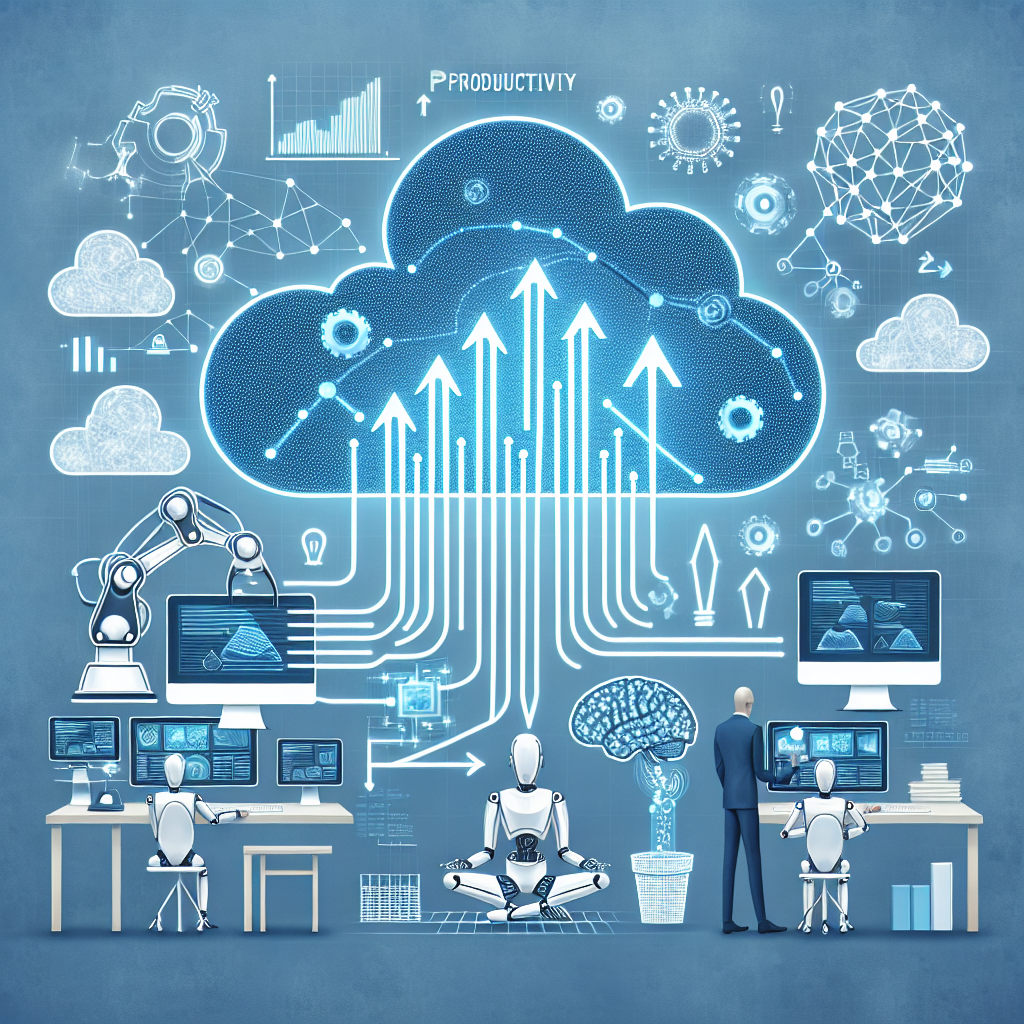In today’s fast-paced and competitive business environment, organizations are constantly seeking ways to increase productivity and efficiency. One way to achieve this is by automating cloud workflows with AI-driven solutions. By leveraging the power of artificial intelligence (AI), businesses can streamline processes, reduce manual tasks, and ultimately save time and resources.
Cloud computing has revolutionized the way businesses operate, allowing them to store, manage, and access data and applications over the internet. However, managing cloud workflows can be complex and time-consuming, especially as organizations scale and grow. This is where AI-driven solutions come in, offering intelligent automation capabilities that can optimize workflows, improve decision-making, and drive productivity.
Automating cloud workflows with AI-driven solutions involves using machine learning algorithms to analyze data, identify patterns, and make predictions. By integrating AI into cloud platforms, businesses can automate repetitive tasks, monitor performance, and proactively address issues before they escalate.
One key advantage of AI-driven automation is its ability to adapt and learn from data in real-time. This means that as workflows evolve and new data is generated, AI can continuously optimize processes to improve efficiency and accuracy. By harnessing the power of AI, organizations can achieve greater agility and responsiveness in their cloud workflows, enabling them to stay ahead of the competition.
There are several ways in which AI-driven solutions can automate cloud workflows to increase productivity:
1. Intelligent data processing: AI can automatically extract, analyze, and categorize data from various sources, making it easier to manage and access information in the cloud.
2. Predictive analytics: AI-driven solutions can forecast trends, identify anomalies, and provide insights that can help businesses make informed decisions and optimize workflows.
3. Automated monitoring and alerts: AI can monitor cloud performance metrics in real-time and proactively alert users to potential issues, enabling them to take corrective action before problems arise.
4. Workflow optimization: AI can automate routine tasks, prioritize workloads, and allocate resources efficiently, allowing businesses to streamline processes and improve productivity.
5. Personalized recommendations: AI can analyze user behavior and preferences to deliver personalized recommendations and suggestions, enhancing user experience and increasing engagement.
Overall, automating cloud workflows with AI-driven solutions can help businesses achieve significant productivity gains, reduce operational costs, and drive innovation. By leveraging the power of AI, organizations can unlock new opportunities for growth and competitiveness in today’s digital economy.
FAQs:
1. What are some examples of AI-driven solutions for automating cloud workflows?
Some examples of AI-driven solutions for automating cloud workflows include intelligent data processing tools, predictive analytics platforms, automated monitoring and alert systems, workflow optimization software, and personalized recommendation engines.
2. How can AI help businesses improve decision-making in cloud workflows?
AI can analyze large volumes of data, identify patterns and trends, and provide insights that can help businesses make informed decisions in their cloud workflows. By leveraging AI-powered analytics, organizations can optimize processes, prioritize tasks, and allocate resources effectively to drive productivity and efficiency.
3. What are the benefits of automating cloud workflows with AI-driven solutions?
Some of the key benefits of automating cloud workflows with AI-driven solutions include increased productivity, reduced manual tasks, improved decision-making, enhanced performance monitoring, and personalized recommendations. By harnessing the power of AI, businesses can streamline processes, optimize workflows, and drive innovation in today’s digital economy.

